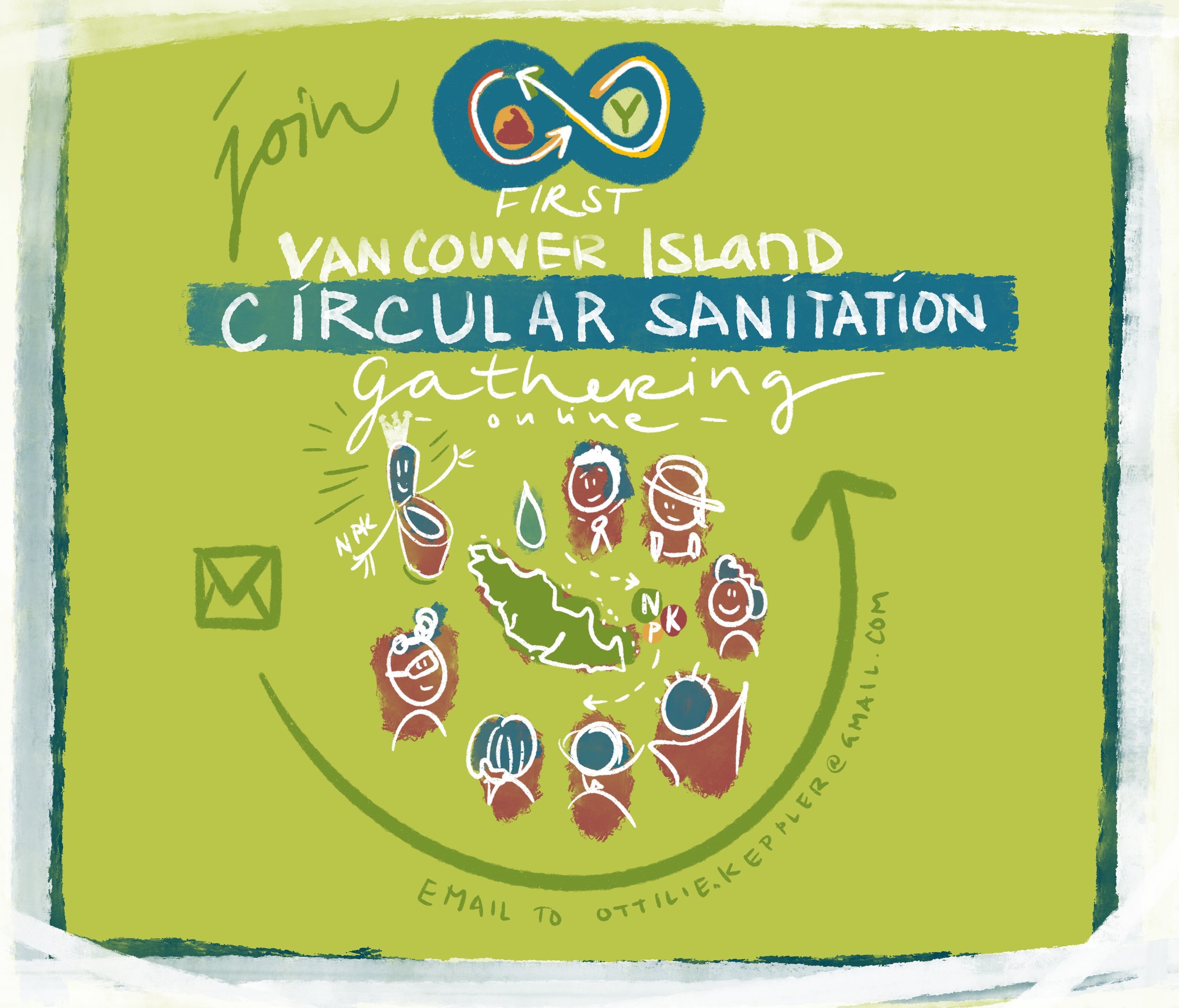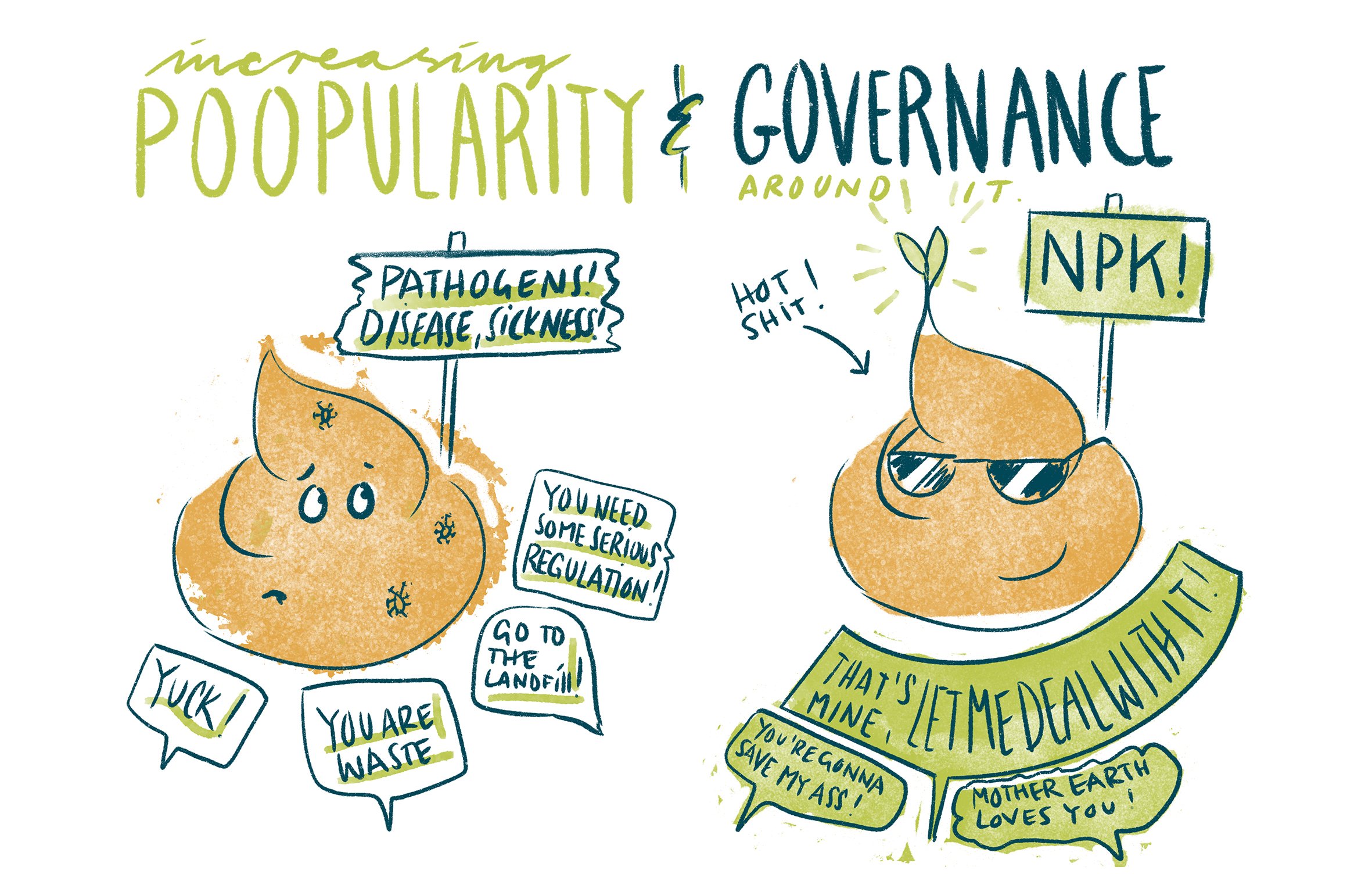Presentation of my Master’s thesis.
Dear all*
thank you for your curiosity in the subject of sanitation and the restoration of the human nutrient cycle.
In appreciation of your curiosity you can find all content related to my master’s thesis in Circular Sanitation on this page now. Including video introductions to different aspects of the thesis.
Thank you to everyone,
who helped along the way.
*interested in regenerative living sanitation, nutrient recycling, systems thinking, systems modelling, systems leadership, global change processes, composting toilets, governance for innovation, resilience thinking…
VIDEO-PRESENTATION
Here is the slow version of the presentation I held for my defence:
A First Vancouver Island
Circular Sanitation
Gathering (Online)
If you are a circular sanitation** enthusiast living in the VI region please sign up below. I am planning to host a first online convergence in the next months. The intention is to sow a seed for pilot projects on the island.
Please sign up here:
>> https://forms.gle/W8PjKCojurBW5Bqg6
** regenerative, waterless, resource oriented, composting toilet based etc.
THE THESIS
Overview graphic combining the approach, context, scope, and results of the thesis. CC-BY-SA Jenni Ottilie Keppler 2023
THE THESIS (PDF):
My 260-page master’s thesis in its raw and un-evaluated form can be accessed as a PDF here (some data in the appendix has been excluded for this version):
The thesis was written as part of the Master of Science Global Change Management at the University for Sustainable Development Eberswalde and as part of an independent research stay as a visiting graduate research program with the Mount Arrowsmith Biosphere Region and Vancouver Island University. The research topic was self-initiated and the research activities as part of the internship were funded through two scholarships from the German Academic Exchange Service DAAD (Deutscher Akademischer Austauschdienst).
ILLUSTRATIONS
illustrations from the thesis to make the contents more digestible:
TRUST & GOVERNANCE
How to rebuild trust between people and governments?
How to adjust governance for a distributed technology that is context and purpose specific and so essential to everyday life as a human?
RECOMMENDATIONS
TO ACTORS IN
LEGISLATION & REGULATION
For the context of sanitation governance, the position of governments needs to shift from top-down legislation and regulation towards allowing more horizontal communication at eye-level. The role needs to shift away from a parental safety guard, towards the role as a facilitator of spaces for dialog (round tables) and agreements with respect to the multiplicity of stakeholders and needs in the system. As a solution to the regulatory rigidity and in order to rebuild trust between regulators and the average person (residents, toilet users), the following suggestions are brought forward:
Participatory regulation design
A participatory approach to developing regulations around sanitation involving all relevant stakeholders to gather adequate context specific feedback. See → Short Feedback loops and space for dialog. A facilitated space for dialog should be hosted by the local government.Distributed sanitation governance
Allowing for the development of regulations and distributive regulation designs on a community and neighborhood level through decentralized, distributed governance models → depicted in Fig 62 Possible model for distributed sanitation governance
The model would enable groups of people to manage their resource recovery solutions within the property boundaries, with the regulatory guardrails from a governance structure at higher order, to monitor the well-being of the ecosystems around as well as the sanitization and quality of the recovered resources. Regular monitoring reports of quality and safety materials (raw and composted) to regulatory bodies to ensure safety and accountability.
Description of the distributed governance model for sanitation:
I: Individuals, who practice onsite recovery. They track the treatment process and report their charts to a government authority (E2), tbd.
NX: A neighborhood community, organized as a practitioner roundtable. Managers of the neighborhood scale treatment facility track the treatment process and report their charts to a government authority (E2), tbd.
E1: Organization that represents neighborhoods (NX). Collects feedback from communities and integrates into principles, rules etc., communicates and coordinates between NX and E2.
E2: Government (BC, RDN) staff that offers facilitation through information, training, communication platforms, guidance and labs for testing and evaluating probes of treated materials (compost, recycling fertilizer). It also hosts space for meetings between regulatory bodies and representatives of E1.
E3: The interface for dialog between regulatory bodies and representatives of E2 to meet, reflect, exchange feedback, collaboratively develop regulations for each type of context. E3 communicates and coordinates between NX and E2.
The governance models are inspired by socio-cracy and what was brought forward by Elinor Oström under polycentric governance for managing and governing common pool resources combined with the suggestion of a framing of human-derived nutrients and the sanitation system as a common pool resource, brought forward by Trimmer et al. (2020).
The above are recommended as resources to regulators and decision makers in all governments.
Development of standards
In order to anchor water-free sanitation and the recovery of human-derived nutrients in the regulatory and legal areas of the system a participatory process (as outlined before), for the development of a standard for safety in the treatment and quality of the recycling product is recommended. This process shall involve multiple stakeholders, from users, practitioners, regulators, farmers, etc. to ensure the adequacy of the regulation to their specific context.
Short feedback loops and space for dialog among stakeholders
In order to gather feedback on what amount of regulation is suitable and in order for skeptical stakeholders to gain trust, there needs to be a facilitated space for a dialogue between legislators, regulators and practitioners to share insights, feedback and recommendations. Here the feedback cycle needs to be short, to enable a flow of progress and learning. An ideal space for this would be a demonstration site under a pilot project to gain trust and knowledge.
Ensuring safety through feedback loops
Ways for enabling safety within the constraints of the regulatory bodies, are:
The regulatory bodies requiring system owners and managers of treatment facilities on all scales, to track temperatures, moisture etc. of the composting process and report these to the authorities
The offering of lab tests of treated materials at an affordable cost
Framing human excrement as a resource
When human excrement is framed as waste, it is handled as waste, when it is framed as a resource it is managed as a resource, which may lead to it being soon of interest to all actors in the system.














